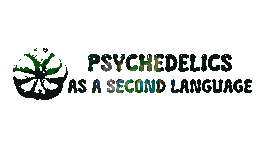FORAGING WITH AN MYCOLOGY AFICIONADO
Plants, Berries, and Fungi are the oldest form of food resources, allowing the early man to survive and be able to evolve until today. So did these practices and the study of what not is edible. Mushrooms specifically being part of various tell-a-tale, present in children’s books, and videogames, raising the curiosity of many, and often causing deaths to those who aren’t careful enough, however to those who are careful enough, mycology can be a great source of power.
Learning how to identify a mushroom by their characteristics, their edibility, and how to prepare them while foraging is essential to one’s survival skills, with the current situation regarding Psilocybe mushrooms, many people started jumping to the woods to find these small cap fungi, unfortunately there’s a wide branch of small-cap fungi including the Galerina Marginata (a deadly specimen visually similar to the Psilocybe genus).
To understand more about how one learns about foraging and identifying tips we spoke to the amateur mycologist and fungi enthusiast Zachary Dennis (@swerveeverything).
Zachary was born in Maryland. When he was ten, his family moved to Odessa, TX, a small town in the oilfields of Texas. He took a degree in Mathematics specializing in Actuarial Science from the University of Texas at Austin. After college, he moved to Phoenix, AZ to work as a pension actuary. In the summer of 2018, I moved to Portland, OR where met his love for fungi, and his wife Michelle. In 2021, he left his job to start an actuarial firm.

How did you first become interested in fungi?
When I moved to Portland in July of 2018, I knew very little about plants or mushrooms. At the time, I thought mushrooms were plants. A few things happened soon after moving to Portland that made me fall in love with plants and mushrooms.
Soon after getting my own place here, I bought a few houseplants to decorate my living room. I quickly fell in love with growing plants. I have vivid memories of the joy and excitement I felt when new leaves would unfurl from those first plants I bought. This love for growing plants has continued and evolved as my knowledge has grown. Michelle and I grow vegetables, herbs, and spices in a plot at the local community garden. Our house is full of houseplants. In the past, I’ve grown vegetables indoors using aeroponics, and had a collection of San Pedro growing in a small greenhouse.
I like to camp and hike. Once I moved to Portland, I began hiking through the forests nearby. The forests of the Pacific Northwest are overflowing with plant life. After spending most of my life in desert environments, I walked the trails in awe. My newfound love of growing plants led me to look closely at the plants around me. Any other time I had traveled to a forested area, I only saw a wall of green. Now I noticed each individual plant and paid attention to their growth patterns, the shapes of their leaves, the color of their flowers. I wanted to know the names of every plant I saw. I bought some local foraging guides to learn which plants I could eat and which plants to avoid.
As summer shifted into fall, mushrooms began appearing along the edges of the trails and the forest air was filled with an earthy fungal smell. I was transfixed by the strange shapes and vibrant colors of the mushrooms. I quickly became as interested in the mushrooms as the plants growing above them.
Soon after arriving in Portland, I reconnected with a roommate from college who had moved to Portland a year before me. As we hung out, he told me about a few psychedelic experiences he’d had over the previous years and how impactful they were to him. I’d never used any psychedelics and knew very little about them. I decided it was an experience worth having. In October of 2018, we took some psilocybin mushrooms. The experience was uniquely beautiful and a powerful catalyst for personal growth and psychological healing.
A dried mushroom is such a small and seemingly insignificant thing, but it had the power to disintegrate the fabric of reality around me and bring my mind to new dimensions of thought. Before this experience, I had been skeptical of any kind of herbal medicine. Using plants or fungi to heal a person or benefit a person’s health seemed like pseudoscience or potentially dangerous. This psychedelic experience made me reconsider my assumptions. This was the most powerful experience of my life, and it was mediated by compounds occurring naturally in a mushroom. I decided that if a mushroom can do that, there must be plants and fungi that can have strong, beneficial affects on the human body in other ways. This line of thinking may seem basic and obvious to some, but it was a novel epiphany to me. My blossoming interests in growing plants and learning the names and characteristics of plants and mushrooms were redirected and focused into learning about medicinal plants and fungi and how they can benefit myself and those around me.
What do you advise people who are new to mushrooms and foraging?
Any activity worth doing has some amount of gatekeeping built up around it. Sometimes this has been established by the community engaged in the activity, to protect their esoteric knowledge. Often, the gates have been built by outsiders fearful of the activity. I’ve found mushroom people to be inviting, excited to share their knowledge, and encouraging to newcomers to the hobby. Mushroom hunters will hide the locations of their favorite mushroom spots but will happily spread the knowledge necessary for you to go find your own spots.
In America, the gatekeeping surrounding mushroom hunting mostly comes from people, with little knowledge of mushrooms, who fear poisonous mushrooms, and have built a cultural taboo around eating wild mushrooms. In less myco-phobic countries this may not occur. Once I started mushroom hunting, everyone had a story to tell about a friend of a friend who died after eating wild mushrooms. The biggest hurdle for me was getting over this phobia of wild mushrooms that had been instilled in me at a young age.
The North American Mycological Association (NAMA) tracks mushroom poisoning in North America. I’d recommend reading through that material on their website. Mushroom poisonings are rare. Amatoxin is the most dangerous mushroom poison found in some Amanitas and Galerinas (a psilocybe look alike). Based on NAMA’s statistics, about 11% of people, who ingest amatoxin, die. It’s rare that people die of mushroom poisoning. I suspect that the friends of friends I’ve been told about weren’t real people.
If a person does the work to identify the mushroom, they will be safe. Never eat a mushroom unless you’re absolutely sure you know what it is and never eat a raw mushroom.
Edible wild mushrooms cause gastrointestinal discomfort in some people. Even the storebought mushrooms (white button, cremini, portobello, etc.) cause GI discomfort in some people. I experienced GI issues after cooking some Boletus edulis in pasta and I don’t forage those anymore.
Many major cities have mycological societies, and this is probably the best way to learn when starting out. Things never go the way the books say they will and it’s nice to gain real experience next to an expert. I’ve never foraged with anyone more knowledgeable than me and am self-taught through books, podcasts, Instagram, and the internet. Some of this is because I’m introverted, and some is because mycological societies stopped meeting during the pandemic. I plan to get involved with a local mycological society soon.
I also recommend that anyone interested in plants or mushrooms to download the iNaturalist app. iNaturalist is a citizen science project that allows users to share observations of plants and animals, connect with other nature enthusiasts, and contribute to scientific research. The app allows users to take photos of the organisms they observe in the wild, tag them with location information and identification notes, and upload them to the iNaturalist website or mobile app. The app has an identification tool powered by AI. The community of iNaturalist users and experts can then help to identify the species in the observations, which are then added to a global database of biodiversity information. iNaturalist also provides resources for users to learn more about the natural world and participate in various scientific research projects. Biologists use this app to see the range of plants and animals and what times of year the mushrooms are growing. By posting on iNaturalist, we can do a small part in increasing scientific knowledge.
What is your foraging routine?
While I do forage mushrooms, my favorite thing is seeing mushrooms I’ve never seen before. Most of the time, I’m just hiking and keeping my eyes open. If I see something interesting, I take some photos, try to identify the mushroom using my phone, and post the photos to iNaturalist.
When I’m trying to find something specific, I start by browsing on iNaturalist to figure out where a mushroom might be and what time of year to look for them. I usually forage with my wife, Michelle. She’s got a better eye for spotting mushrooms than me. I bring a mushroom knife with a curved blade, a small magnifying glass, a tackle box or a basket, and a trash bag. A tackle box is great for gathering smaller mushrooms since you can keep different mushrooms in different compartments. For bigger mushrooms a wide basket works well. Mushrooms are fragile and if you stack too many the weight will crush the mushrooms at the bottom of the pile. When mushroom hunting, I’m usually off the trail looking closely at the ground. I bring a trash bag because I often find more trash than mushrooms. Every forager should have a simple food dehydrator. Use the dehydrator to save edible mushrooms for later in the year or to dry medicinal mushrooms to use when needed.
What are your favorite mushrooms to look for and why?
-
- Turkey Tail: Turkey tail mushrooms (Trametes versicolor) are common in the Pacific Northwest. They are small polypore mushrooms that are easy to identify. They aren’t ideal for eating because they are hard. I steep the mushrooms as a tea. They have plenty of medicinal benefits. The most notable being their anti-tumor and anti-viral properties. It’s a good thing to drink during the colder months to boost your immune system or when you’re sick to aid in recovery. They are a common medicinal mushroom among people going through cancer treatment to help slow the growth of the tumor and boost the immune system during treatment.
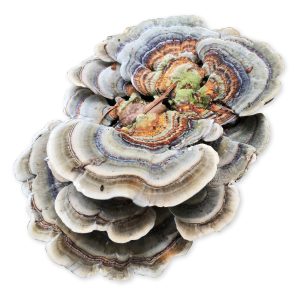
(Trametes versicolor)
-
- Amanita constricta: I often see Constricted Grisettes (Amanita constricta) in Forest Park in Portland. I assume they’re poisonous. It’s a beautiful mushroom. They have a tall, stately stipe and a smooth cap with a striated margin. There may be some variation in color but in Forest Park they are a shiny silver color. They look like someone spray painted them silver.
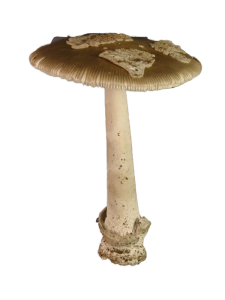
-
- Zeller’s Bolete: I’ve seen Zeller’s Bolete’s (Xerocomellus zelleri) in a couple forests. They’re edible but I’ve never tried eating them. This is a beautiful mushroom that I love coming across. The dark brown or black cap has an uneven texture and looks like a rock, the pores on the underside of the cap are yellow and the stipe is often a deep red. It’s a striking splash of color against the backdrop of a gloomy autumnal forest.
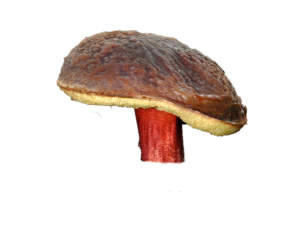
John Kirkpatrick
-
- Amanita muscaria: Most people are familiar with the look of the iconic Amanita muscaria. I love coming across these massive red caps in a forest. I’ve never ingested these mushrooms, but I’ve made tinctures of them to apply topically. The compounds are water-soluble and not alcohol-soluble. Use a vodka that is 40% alcohol, rather than Everclear, when making an Amanita muscaria tincture. The tincture, when applied topically to a painful area of the body, removes the pain instantaneously. Some people use topical amanita to manage chronic pain like Sciatica.
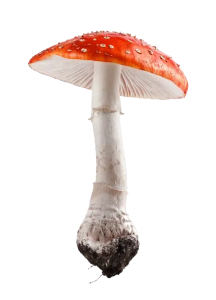
-
- Psilocybe azurescens: These are fun to forage for obvious reasons. I’ve found them on the Washington state coast.
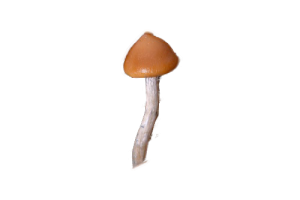
Rich Tehan (richtehan)
Identifying techniques:
For people new to mushrooms, I recommend taking the time to learn the terminology used to describe the characteristics of mushrooms. It’s important to know what caps, gills, stipes, universal veils, etc. are. It’s also important to know the different forms these characteristics can take and how they’re described.
For example, the gills of a mushroom can connect to the stipe in various ways. A mushrooms gills are considered “free” if the gills do not reach the stipe. Gills are considered “decurrent” if the whole gill runs down the stipe of the mushroom. These are only a couple examples of how mushroom gills can occur. Taking the time to learn the different ways of describing the mushroom characteristics will draw your attention to subtle differences in the mushrooms that most people would overlook. This is invaluable when differentiating a mushroom from its look-a-likes.
When I come across a mushroom I’ve never seen, I use iNaturalist to identify it. The key to getting good results from iNaturalist is to take good photos. In the ideal situation, there are a lot of the mushrooms around. I gather 3 or 4 mushrooms of different sizes and place them on their side in front of mushrooms that are still growing from the substrate. A photo of this shows how the mushroom changes as it grows and reveals the gills. iNaturalist can often identify the mushroom, at least to the genus. Often, other users will confirm my mushroom id or correct it.
If I want to eat a mushroom, I try to get 2 or 3 sources for the identification. After using iNaturalist, I look at a local guide and see if its description matches the mushroom I have. Mushrooms of the Redwood Coast is the best guide for people living on the pacific coast of the US.
What are some interesting pages for people to follow?
William Padilla Brown (mycosymbiote) – William is an important person in the mushroom world. He’s hard to describe. I recommend following him on Instagram and finding some interviews with him. I really enjoy listening to him talk, he has refreshingly unique opinions.
Mushroom Hour Podcast – this is a great mushroom podcast that features guests from a variety of disciplines.
Alan Rockefeller – Alan is a citizen scientist that specializes in mushroom photography and DNA sequencing. He’s identified a few new species of mushrooms and travels to Mexico each year to research mushrooms in the cloud forests there.
Alison Pollack (marin_mushrooms) – Alison is a great photographer who focused on slime molds and small mushrooms.
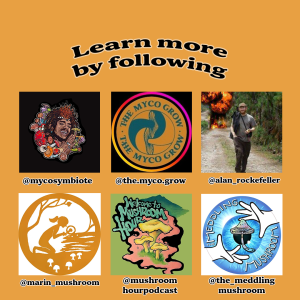
As a last piece of advice, I’d utterly advise people who are now starting their mushroom-hunting journey to have fun and learn how to identify the various species around the world before collecting them. Learn their chemistry, mushroom physiology, what constitutes a mushroom, their veils, caps, and spores, and understand the influence of fungi in the general environment and our surroundings.
We hope you have an amazing time identifying and foraging using our tips.
Stay safe, mush love.
